Today we are taking a break from the usual review and guide schedule. This is an appeal to the various manufacturers out there regarding the Small Business Server that we need. As a background, ServeTheHome, despite its name, actually has more small business users than home users at this point. As a result, we get tons of e-mail around various topics, one of which I personally have a passion for – the need for a real small business server. Big vendors will market offerings, generally designed for enterprises to the small business market. Alternatively, manufacturers market servers designed first as a standard desktop chassis at the home and small business segment. Here is the deal, we need a real small business server. Let’s take a look at what that would look like and why we need this.
First off, there is an awesome segment out there in terms of the NAS players that largely understands the small business server segment to a large extent. Drobo, Thecus, QNAP, Synology, Buffalo and etc. are all well aware of the configuration. All five of those makers, and others, eight bay NAS devices. Here is my question, where is Dell’s offering? Or HP (OK the ProLiant N40L is an awesome first step in this direction.) Here is a gallery of five 8-bay NAS options and the N40L to give folks ideas around form factors.
Small Business Server – Thoughts on Requirements
To help the process along, let’s envision what we would want. Feel free to leave comments below with other thoughts.
- Mini ITX or Micro ATX motherboard support. A lot of small business servers are served just fine by the Intel LGA 1155 or AMD Socket AM3+. Neither has spectacular standard PCIe availability so there is little need for a full ATX chassis. The merits of mini ITX are smaller form factor. The merits of micro ATX are four expansion slots plus room for 4+ DIMMs.
- 8 Hot-swap drive bays. Sure there are options out there like the popular Fractal Design ARC Midi that costs around $100 but it does not offer hot swap bays. We know hot-swap is easier in the small business server market and server market. We are aware of the hot swap cages, and those products work well. The main issue is that spending $100 each for two 4-in-3 hot swap cages quickly raises the cost by a significant amount. Expansion through this method is a valid case, but 8 bays are minimum.
- 8x 3.5 hot swap bays plus 2x 2.5″ bays minimum. In a small business server whether mini ITX or micro ATX, this is a simple formula: two onboard SATA ports, eight HBA/ RAID controller ports. That would allow one to have RAID 1 OS/ VM disks and a VT-d pass-through storage controller as an example.
- Support for ECC memory. Data costs a ton. We have all seen data saying that there is a low chance of anything going wrong even without ECC memory. On the other hand, let the small business server market decide if a few dollars is worth the security.
- IPMI 2.0 or equivalent remote management built-in (vPro would be an example.) From what I understand something like three quarters or more of enterprise servers now include remote management. Here is my thought for the small business server mantra – Never plug a monitor, keyboard or mouse into the device. Ever.
- The small business server, especially if it is not a rack mount design, should be very quiet. The NAS makers have figured this out. Systems like the HP N40L and even Del T110 servers are relatively quiet. The idea needs to be that these systems can be put on or under a desk without interrupting work.
- No-vendor lock-in for drives. These are not enterprise systems where disk prices are very high only to be discounted by a significant amount through a direct sales force or through partners. For a small business server, drives are going to be purchased and upgraded through resellers.
- Reliable 80+ Gold or better power supplies. Green IT is in. The power supply is not going to be redundant so it needs to be reliable.
- Choice of CPUs – For some, a CPU like the Pentium G2120 is going to be plenty. For others, a fast Intel Xeon E3-1240 V2 may make more sense. The Turion II is not exactly the highest performing option out there.
- We need someone to either the chassis or small systems for these small business servers! Oh and offer them at a reasonable price. Make money on cloud connected small business offerings if needed.
I did look into sourcing a small business server mini ITX NAS design from Chinese manufacturers. Even purchasing 100 unit quantities costs were well over $200 with shipping. Also, the design was sub-optimal. It relied upon lower quality power supplies. Lastly, it did not have a standard expansion slot so a PCIe ribbon was required and there was no easy external access to the chassis.
Getting the 10 Features in the Small Business Server
If there is an enterprising (or small business-ing) company or individual that wants to take charge let us know. We are more than happy to get publicity for the project, give feedback during development and help if we can. Feel free to use our community to bounce ideas around. Bottom line, we need the desk mount (or floor mount) 8-bay small business server. The small business NAS players already do a great job at this. The HP ProLiant N40L was a decent step in this direction. We just need a better small business server option.
If anyone has thoughts on the small business server, feel free to provide them here or in the forums.

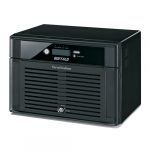
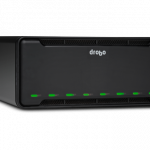
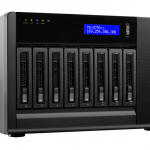
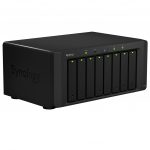
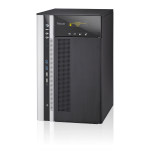
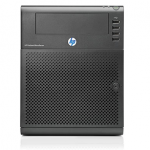



Too true. Hopefully HP will make a ProLiant encore to these specs. The Turion II Neo is slow.
Also great would be if for $350 US they would sell a barebones motherboard and case. 8 drive RAID 6 can easily be 18TB + 6TB parity or more these days, so with SSD to cache, that is one awesome storage server.
You mention a Chinese option. Link to the article with your research perhaps?
We got tired of those slow and over priced “NAS” solutions, moved onto FreeNAS running ZFS using 1 SSD for ZIL and 1 SSD for L2ARC and never looked back.
Intel Xeon E3-1240 V + 2X9SCM-F
LSI 9260-8i + 2x Lian Li EX-H34B
What we need now is a compact case to fit the components
Good article. I was buying/selling vendor’s servers and the drive options were always an issue. Decided that building my own allowed more options and parts could be interchangeable. Plus spares were cheaper than buying manufacturers spares to keep full system under warranty. I think the case is the biggest problem in the configuration, followed by redundant power supplies (If you chose that route. I agree that reliable would be better but can’t we have both?)
Thanks for the interesting article.
$500 with that pentium g2120 you review early this week. Perfect server specs for a small business.
Needs to include trayless hot swap days.
er…… swap bays.
Makes easy to install and replace drives. Not every small business has a correct size tool to work on the server just sitting around.
While at it. Tooless servicing.
And wait, let me guess… you want it for $499, shipping included. :)
I do small business network installation and support, and I have no idea what these ‘requirements’ are about. First, if a company has the coin, they purchase supported hardware from the likes of HP, Dell or Cisco. If a company doesn’t, then I build a box, but it does not come with 24/7 onsite support. Then again, if you’re trying to appeal to companies like ASUS or D-Link, you’ll be lucky to even get phone support.
The size requirement makes zero sense. Once you stuff eight hard drives and a full sized PSU into the chassis, the size of the motherboard is irrelevant. A mATX motherboard is just 2.4″ shorter than an ATX board and the space saved by that difference won’t be noticed in any environment.
Few small businesses have a need for that kind of file storage. I’ve set up server infrastructures for 40 person offices that needed much less than a TB of file storage. Certain kinds of businesses, possibly, but not many.
Your requirements sound more like a wish list for a dorm room p__ server than anything to do with small business.
Based on the N40L pricing, $500 would be about right. Price difference ITX to micro ATX is usually a few dollars and you can get a 4 disk cage for $70. $350 + $50 upgraded components + $100 for larger motherboard and more hotswap is $500. With coupons could be less. HP can sell the N40L at a profit but smaller guys probably cannot compete.
Micro ATX is generally lower power consumption than ATX and you do not need more than 1-4 expansion PCIe slot.
Maybe this is something a person like James would buy and customize for customers?
Had other ideas about this today! What if you could 3d printer the case and parts?
@Victor
Cases is the biggest problem you say? You poor Americans have been ripped off by middle men for so long you have no idea how cheap things really costs, here in China chassis is never the problem. They come in any shape and sizes and they are dirt cheap:
2u 8bay hotswap rackmount chassis, USD$110
hxxp://item.taobao.com/item.htm?spm=a230r.1.10.48.d991fc&id=10179831269
4bays specialized mitx chassis for custom NAS, USD$91
hxxp://tbdqcn.w56.en.tm/index.php/item/16991040069
hxxp://item.taobao.com/item.htm?spm=a1z10.3.17.8.c07f89&id=16991608669&
2bay specialized mitx chassis for custom NAS, USD$62
hxxp://item.taobao.com/item.htm?spm=a1z10.3.17.10.c07f89&id=16991040069&
5.25″ to 4 x 3.5″ bay converter, USD$33
hxxp://item.taobao.com/item.htm?spm=a230r.1.10.21.3e80c2&id=15807065980
I have to agree with James on this one. Most of your requirements seems more like a wishlist for a homeserver, not something a small to medium business would care about.
Why would you need hotswap? Sure, it’s easier, but is it really a necessity? It’s not like you need to replace hundreds or even dozens of drives every week like in a larger enterprise. And if it’s because you need the uptime that you’d get from hotswap, you would NEVER not have redundant PSU’s or 24/7 onsite support.
That’s just one quick observation that would make me think your suggestion is more a wishlist for a home storage server, and believe me; I would pay good money for all of the features that you have on that list for my home server, but I would never ever even consider most of your suggestions for a small business server.
We have a small startup. This is exactly what we need. Put it under a desk. We are software guys and artists. Toolless drive insertion is key because half the people have never used a screwdriver.
One thing missing is we need fantastic status lights. This should be as easy to service as the new copiers are. Artist and developer proof simplicity.
Would a microATX case measuring 9 x 14 x 19-inches (WxHxD) be small enough?
Whilst I supply big name servers and solutions to SMEs and can appreciate where you are comming from, I also have experience of small companies with no dedicated IT department and what they want is for a fairly reliable system that will be a ‘jack of all trades’ (file / DNS / DHCP / Backup server etc).
There are many small businesses running without redundant PSUs just as there are many who do not have a dedicated IT department. What about the sole traders or mom and pop businesses, small family firms with no desire to commit large sums in IT staff and hardware when their requirements can be serviced by a small unit like this. Units like the HP microserver or ML110 G7 are nice but have limited drive space.
Hot swap is also not just for changing failed drives. It can allow for backup rotation and making it easy to have one or more backup drives placed in a secure fireproof location or off-site without needing to open up the case and grab a screwdriver. Sure there are other ways with a second off-site unit or cloud storage.
To put it another way, if my parents decided to setup a small ebay based business in their retirement I would not be suggesting they had bought a server with redundant PSUs and hired dedicated IT staff.
A small unit like the one Patrick suggested would fit the bill and allow for continuing expansion with more easily implemented resilient backup processes.